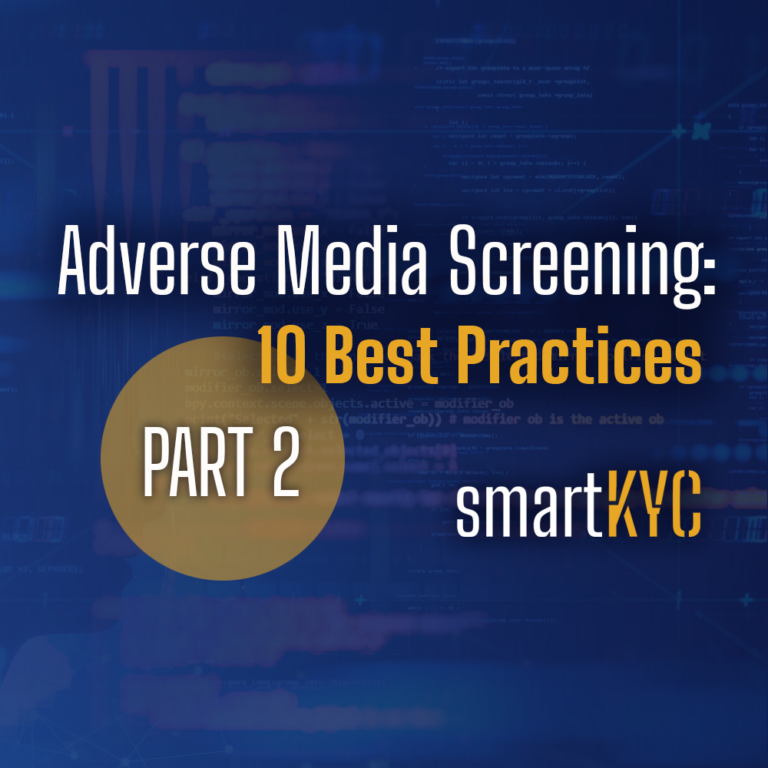Our series provides effective tips for developing a process to break down possible barriers to implementing a continuous adverse media screening programme.
If you have not done so already, be sure to read our previous blog post; ‘Adverse Media Screening: 10 Best Practices‘ for tips 1-3.
4. Déjà vu and avoiding repetition
While both corporate communications and KYC departments are interested in what is being reported in the media, one essential difference is that repetition is the enemy of KYC departments, while corporate communications rely on it.
One thing is for sure, news repetition is more prevalent than ever. This is due partly to the economics of newspapers and partly to the proliferation of online news aggregators, which means content is regurgitated like never before.
Minimizing duplicate articles is technically relatively straightforward. Identifying what we call far ‘informationally similar’ content, however, is far more challenging.
Through automatic semantic extraction, an intelligence baseline should be established such that a financial institution can be alerted only to genuinely new ‘facts’ in the future. This avoids information sitting in a metaphorical ‘echo chamber,’ with the same data being read over and over again.
Consider the following three separate media snippets when screening the company, ZTE:
- “Регулятор объяснил свое решение тем, что ZTE, которая была оштрафована властями США на $1,2 млрд за нарушение санкционного режима в отношении Ирана и Северной Кореи, нарушила условия соглашения, заключенного для урегулирования этого дела.”
- “Há três anos, a ZTE se declarou culpada por violar sanções comerciais contra o Irã e a Coreia do Norte.”
- “In March 2017, ZTE agreed to pay a record fine of $1.2 billion to the United States for violating sanctions on Iran and North Korea.”
These three snippets are written completely differently, in different publications and languages. They all, however, pertain to the same fact that this company had committed sanctions violations.
A KYC analyst shouldn’t have to read all three, but without the technological means to aggregate these, along with the many other media references, there would be no other option.
5. Reducing external search footprint
Some institutions are sensitive to the volume of searches leaving their environment for security reasons. This issue could potentially be exacerbated with the implementation of a high-frequency adverse media screening programme, but minimization of external search traffic can be easily achieved by:
a) Hosting the base media content on-premise with updates received daily, so that the search doesn’t leave the bank’s environment (content providers are amenable to this deployment model)
b) Using specialist search anonymisation techniques
c) Considering the outside-in approach, see tip 3
6. False positive minimization
The main contributor to work inefficiency and general frustration is false positives due to mistaken identity – going down KYC research rabbit holes only to establish that what you are reading is not really about your search target.
One misapprehension is that adverse media searching is solely about looking for a name in proximity to an adverse term and sifting through the results. News items will often yield richer information from which technology can ‘disambiguate’ identity such as name, age, nationality, area of residence, and sometimes occupation, of the subject of the article.
Semantic search technology can understand these various textual elements for what they are and map them to the identifying attributes that were captured at onboarding. That way a confidence score can be ascribed to a hit based on its likelihood to be about the bank’s client. Rest assured that, for security reasons, these identifying attributes do not need to leave the building as all the processing should be done on-premise.
With human source intelligence gathering, a local language perspective significantly reduces the risk of missing a vital piece of information. Do ensure that where appropriate, the name of your KYC subject is transliterated, ideally automatically to avoid human error.
A search for a well-known, alleged Russian criminal yields ten times the results using the original Cyrillic version of the name compared to the Latin equivalent. Your search tool should do all that heavy lifting for you.
Defining your negative news screening, having reliable translations, and taking a content-focused approach are our second 3 tips for a robust and thorough adverse media screening programme. Later in the series, we will take a look at 4 final tips to consider.
Click here to read the third post in this series: Adverse Media Screening: 10 Best Practices – Part 3.
About smartKYC
smartKYC is the world’s most advanced multilingual semantic search engine to machine read all online media content for potential adverse news about your clients, improving KYC processes and reducing risks.
The shortcomings of traditional adverse media screening tools result in inefficiency, frustration and a lack of confidence in the work done. In contrast, smartKYC’s semantic search and media analysis platform results in faster, better and more cost-effective KYC.
If you’re interested in learning more about smartKYC’s award-winning technology and how it can transform the efficiency and effectiveness of your KYC operations, book your demo today.
